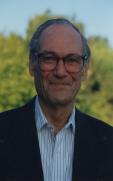 Phillip David Cagan, author and scholar in the field of macroeconomics, Professor Emeritus at Columbia University, and beloved father, passed away peacefully on June 15th, aged 85, in Palo Alto, California. He made significant contributions to the field of economic science, most notably to monetary economics and the study of inflation.
Phillip David Cagan, author and scholar in the field of macroeconomics, Professor Emeritus at Columbia University, and beloved father, passed away peacefully on June 15th, aged 85, in Palo Alto, California. He made significant contributions to the field of economic science, most notably to monetary economics and the study of inflation.
Professor Cagan published over 100 books, journals, reviews, reports and pamphlets. His Ph.D. dissertation, “The Monetary Dynamics of Hyperinflation,” published as the leading chapter in the volume “Studies in the Quantity Theory of Money” (University of Chicago Press, 1956), was immediately acclaimed as a classic, and has continued to be a staple of reading lists of courses in monetary economics for more than 50 years. It remains the definitive study of the problem of hyperinflation, the definitions and concepts of which provide the starting point for all subsequent work on this problem.
In addition to documenting the role of growth in the supply of money in seven hyperinflations from the first half of the twentieth century, the work was important for demonstrating the importance of variations in inflationary expectations as a determinant of the demand for money and hence the inflation that would result from a given increase in the money supply. The model of money demand proposed and fit to historical data in this study, known as the “Cagan model,” continues to be widely used. The work was also the most celebrated empirical application of a particular model of expectations formation, known as “adaptive expectations,” that for the first time allowed endogenous changes in expectations to be explicitly modeled in analyses of the effects of alternative monetary policies. This work on the endogeneity of expectations foreshadowed what was to become one of the most important themes of work in monetary economics over the next several decades. Cagan’s dissertation supervisor, Milton Friedman, wrote of his thesis, “There are not many doctoral dissertations that had so wide an impact or have come to occupy so lasting a place in economic literature.”
Professor Cagan continued to write extensively in the area of monetary economics, where he was a leading proponent of the monetarist approach that stressed the role of variation in the money supply as a determinant of inflation and business fluctuations. His most important later works were the books “Determinants and Effects of Changes in the Stock of Money, 1875-1960” (Columbia University Press,1965) and “Persistent Inflation: Historical and Policy Essays” (Columbia University Press, 1979).
Phillip Cagan was born on April 30th, 1927 and grew up in Beverly Hills, California. He joined the Navy at age 17. He earned his B.A. from UCLA in 1948, where he played on the tennis team. He received his M.A. in 1951 and Ph.D. in Economics in 1954 from the University of Chicago. He then worked for the National Bureau of Economic Research (NBER) in New York for two years. Subsequently, he taught at the University of Chicago for three years and at Brown University for seven years. He was hired by Columbia University in 1966, where he taught economics for nearly thirty years, and held the Chair of the Department of Economics for three years.
In 1969, Professor Cagan took a 15 month sabbatical from Columbia to work for the Council of Economic Advisors (CEA) under the Nixon administration. During his time at Columbia, Prof. Cagan was also associated with the American Enterprise Institute (AEI) in Washington, D.C., for which he wrote extensively on public policy issues. In 1975 Prof. Cagan was elected a Fellow of the Econometric Society. He continued to play tennis, a lifelong passion, until he was 80.
Professor Cagan was married to Elizabeth Wright in 1952 which ended in divorce in 1974. He is survived by his former wife, their three sons and seven grandchildren. John and Mo Cagan live in London, England, and have three sons, Alex, Ben and Gabriel. Laird and Sherry Cagan live in Portola Valley, California and have two daughters, Kyla and Kiana. David and Nicci Cagan live in Stone Ridge, New York and have one son, Ari, and one daughter, Sophie.

